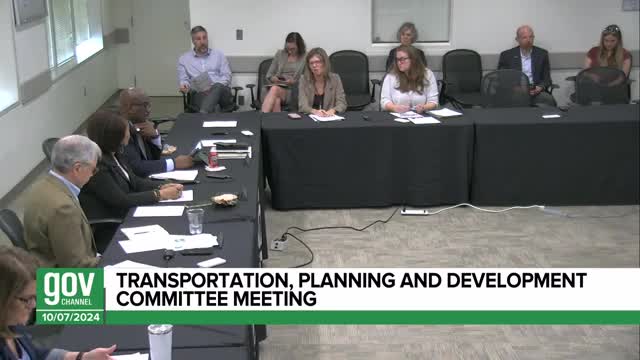City leaders push for urgent I-77 South traffic solutions
October 07, 2024 | Charlotte, Mecklenburg County, North Carolina
This article was created by AI summarizing key points discussed. AI makes mistakes, so for full details and context, please refer to the video of the full meeting. Please report any errors so we can fix them. Report an error »

During a recent government meeting, officials discussed key initiatives aimed at enhancing transportation and infrastructure in Charlotte, with a focus on the I-77 South corridor. The meeting highlighted the need for a strategic mobility plan that connects various sectors, including energy generation and workforce development, to improve transit options and align policies across different plans.
A significant topic was the ongoing congestion on I-77 South, which has prompted the Charlotte Regional Transportation Planning Organization (CRTPO) to consider options for addressing the issue. The North Carolina Department of Transportation (NCDOT) has presented two potential solutions: a state-funded managed lane option or a public-private partnership (P3). However, due to escalating costs, the state-funded option is deemed unfeasible, leading officials to lean towards exploring the P3 model, which is estimated to cost around $3.7 billion.
The CRTPO plans to vote on whether to instruct NCDOT to prepare a request for qualifications (RFQ) for potential bidders, a step that could pave the way for the P3 approach. The urgency of the situation is underscored by the fact that any agreed-upon actions may take up to a decade to yield improvements on the road.
Council members expressed support for pursuing the P3 option, emphasizing the importance of addressing long-term transportation challenges, especially in light of potential reallocations of state funds due to recent natural disasters in other regions. The meeting concluded with a consensus on the need for proactive measures to secure funding and facilitate community engagement in the planning process. Further discussions and updates from NCDOT are anticipated in the upcoming council meeting.
A significant topic was the ongoing congestion on I-77 South, which has prompted the Charlotte Regional Transportation Planning Organization (CRTPO) to consider options for addressing the issue. The North Carolina Department of Transportation (NCDOT) has presented two potential solutions: a state-funded managed lane option or a public-private partnership (P3). However, due to escalating costs, the state-funded option is deemed unfeasible, leading officials to lean towards exploring the P3 model, which is estimated to cost around $3.7 billion.
The CRTPO plans to vote on whether to instruct NCDOT to prepare a request for qualifications (RFQ) for potential bidders, a step that could pave the way for the P3 approach. The urgency of the situation is underscored by the fact that any agreed-upon actions may take up to a decade to yield improvements on the road.
Council members expressed support for pursuing the P3 option, emphasizing the importance of addressing long-term transportation challenges, especially in light of potential reallocations of state funds due to recent natural disasters in other regions. The meeting concluded with a consensus on the need for proactive measures to secure funding and facilitate community engagement in the planning process. Further discussions and updates from NCDOT are anticipated in the upcoming council meeting.
View full meeting
This article is based on a recent meeting—watch the full video and explore the complete transcript for deeper insights into the discussion.
View full meeting
